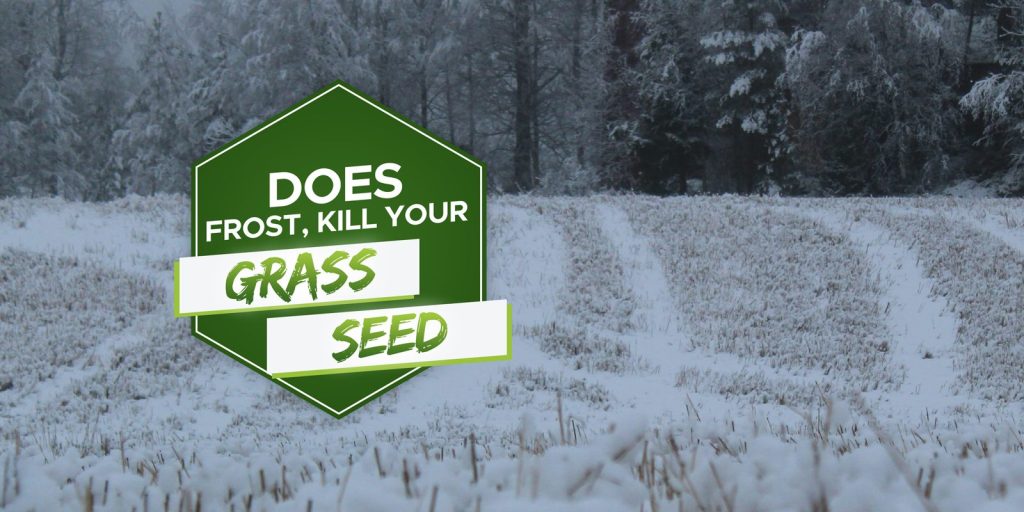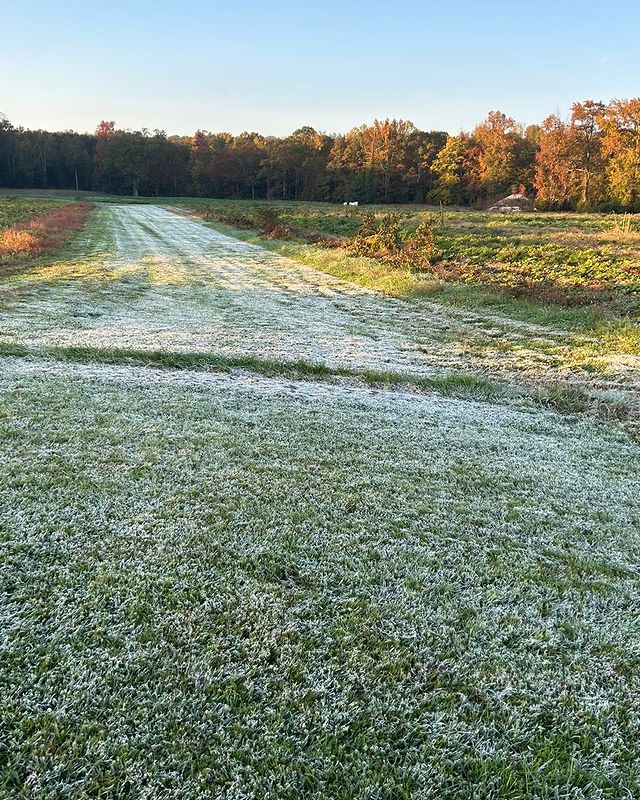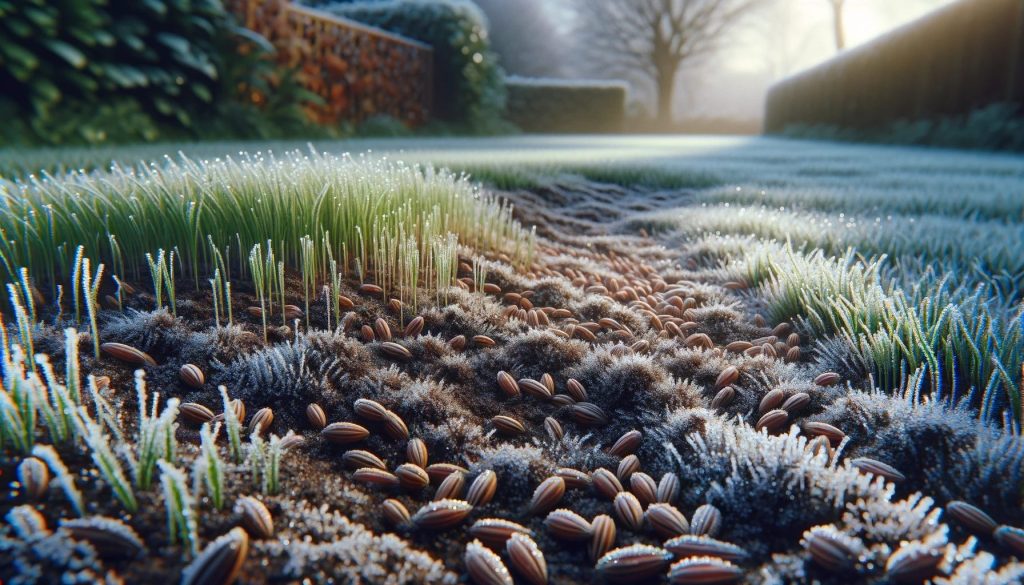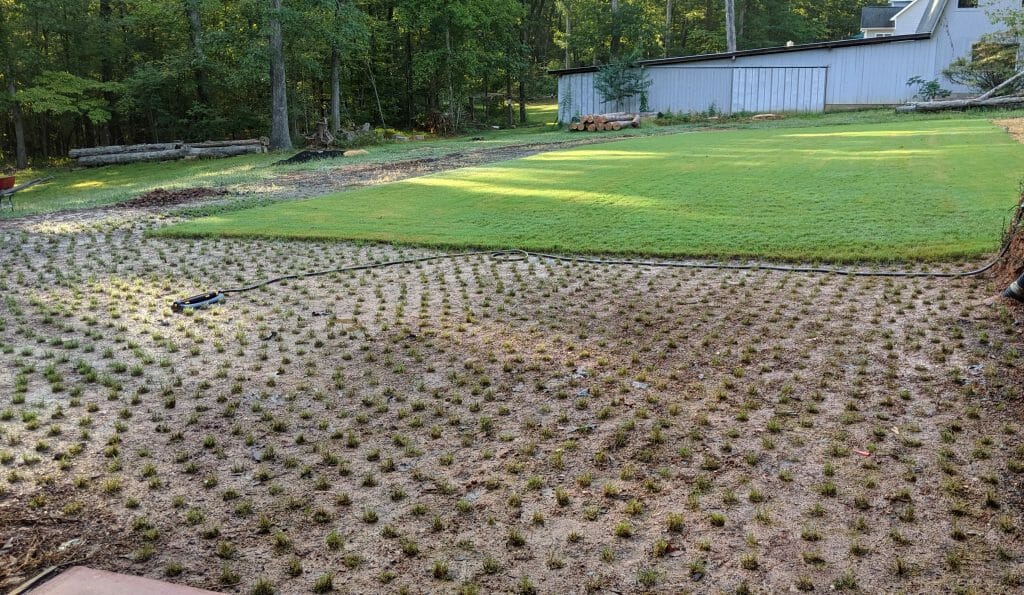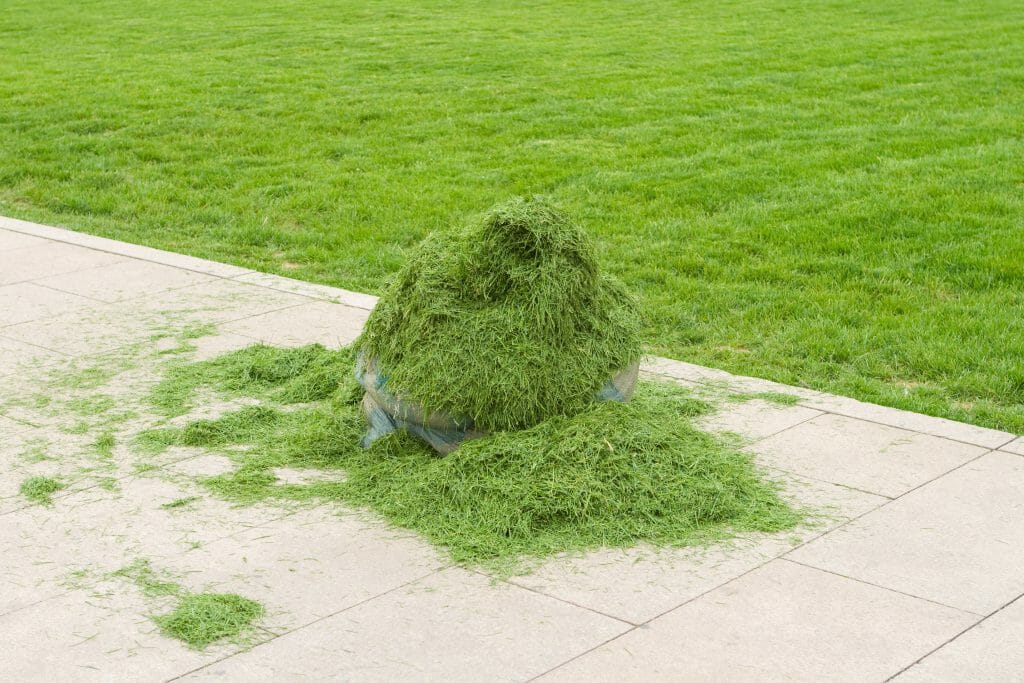When it comes to planting grass seed, timing is everything!
One of the biggest concerns for those looking to plant grass in colder climates is whether or not frost will kill their newly planted grass seed.
The short answer is that frost can kill grass seedlings, but the seeds themselves are generally hardy enough to survive.
While frost can be detrimental to newly sprouted grass seedlings, it is important to note that grass seed itself is relatively temperature resistant.
If grasses go to seed in the fall, the seeds lay dormant in the soil all winter and sprout in the spring.
If you are planting grass seed in the fall, it is important to be aware of the potential for frost and to take steps to protect your newly planted grass seedlings.
Understanding Frost and Its Effects on Grass Seed
As gardeners and lawn enthusiasts, we know that frost can have a significant impact on our plants and grass.
When it comes to grass seed, frost can be detrimental to its growth and development.. and we’re about to tell you why.
Frost occurs when the temperature drops below freezing, causing water vapor in the air to freeze and form ice crystals on surfaces.
When these ice crystals form on grass seed, they can damage or kill the seedlings.
The ground may be too hard for the seed to make good contact with the soil, hindering germination.
Not all types of grass seed are equally susceptible to frost damage.
Warm-season grass varieties only grow when soil temperatures are above 70℉, so spreading this type of grass seed in the spring means that you’re at least 90% sure the last frost has come and gone.
Cool-season grasses can tolerate some frost, but they are still vulnerable to damage.
| Grass Type | Season Type |
|---|---|
| Bermuda Grass | Warm Season |
| Zoysia Grass | Warm Season |
| St. Augustine Grass | Warm Season |
| Centipede Grass | Warm Season |
| Bahia Grass | Warm Season |
| Buffalo Grass | Warm Season |
| Kentucky Bluegrass | Cool Season |
| Perennial Ryegrass | Cool Season |
| Fine Fescue | Cool Season |
| Tall Fescue | Cool Season |
| Bentgrass | Cool Season |
| Annual Ryegrass | Cool Season |
Optimal Conditions for Sowing Grass Seed
When sowing grass seed, it is important to ensure that the conditions are optimal for germination and growth.
Temperature Requirements
Grass seed requires specific temperature conditions for germination.
The optimal soil temperature for cool-season grasses is between 50-65°F (10-18°C).
Warm-season grasses, on the other hand, require a soil temperature of at least 70°F (21°C) for germination.
It is important to note that soil temperature is different from air temperature. Therefore, it is recommended to use a soil thermometer to measure the soil temperature before sowing grass seed.
Soil Preparation
Proper soil preparation is crucial for successful grass seed growth.
The soil should be loosened to a depth of at least 6 inches (15 cm) using a garden fork or tiller.
Any rocks, debris, or weeds should be removed from the area.
Adding organic matter like compost or peat moss to the soil can improve soil structure and increase nutrient availability.
We also recommended adding a starter fertilizer to the soil before sowing grass seed.
Moisture Levels
Grass seed requires consistent moisture for germination and growth.
The soil should be kept moist but not waterlogged.
Overwatering can cause the seeds to rot and fail to germinate.
We recommend to water the soil lightly before sowing grass seed to ensure that the soil is moist.
After sowing, the soil should be watered lightly every day until the grass seedlings reach a height of 2 inches (5 cm). At this point, the frequency of watering can be reduced to once or twice a week.
Protective Measures Against Frost
When it comes to protecting grass seed from frost, there are several measures we can take to ensure the survival of the seedlings.
Here are some techniques to consider:
Covering Techniques
One way to protect grass seed from frost is to cover it with a protective layer.
This can be accomplished through the use of a frost blanket, straw, or even a layer of mulch.
These materials act as insulation, trapping heat and protecting the seedlings from the cold.
It is important to note that covering should only be done when necessary.
If the temperature is only expected to dip slightly below freezing, covering may not be necessary.
Covering should be removed during the day to allow the seedlings to receive sunlight.
Timing of Watering
Watering can also play a role in protecting grass seed from frost.
It is best to water in the morning, allowing the water to soak into the soil and be absorbed by the seedlings throughout the day.
This allows the seedlings to develop strong roots and better withstand the cold.
Don’t water in the evening or at night! Water left on the surface of the soil can freeze overnight, potentially damaging the seedlings.
Assessing Frost Damage on Grass Seed
When it comes to assessing frost damage on grass seed, there are a few key indicators to look out for.
By examining the grass seed’s visual appearance and growth patterns, we can determine the extent of the damage and take appropriate action.
Visual Indicators
One of the most obvious visual indicators of frost damage on grass seed is discoloration.
Frost-damaged grass seed may turn brown or yellow, indicating that the seed has died.
Frost damage may cause the grass seed to become brittle and break easily.
Another visual indicator to look out for is mold or fungus.
Frost damage can weaken the grass seed, making it more susceptible to mold and fungus growth.
If you notice any signs of mold or fungus on your grass seed, it’s important to take action to prevent further damage.
Growth Assessment
Assessing the growth of your grass seed is another important factor in determining frost damage.
If the grass seed has not germinated yet, it may be difficult to determine if it has been damaged by frost.
If the grass seed has already begun to sprout, you can examine its growth patterns to determine if it has been affected.
Frost-damaged grass seed may show stunted growth or fail to grow altogether. If the grass seed has been damaged by frost, it may take longer to germinate or sprout.
Recovery and Re-seeding Strategies
If your grass seedlings have been damaged by frost, don’t worry.
There are recovery and re-seeding strategies that you can use to revive your lawn.
Here are some tips that can help:
- Wait and observe: If you’re not sure if your grass seedlings have been damaged by frost, wait and observe. In some cases, the damage may not be apparent right away. Give your lawn a few days to recover and then check to see if there are any signs of life.
- Water your lawn: After a frost, it’s important to water your lawn to help the grass seedlings recover. Watering your lawn will help to thaw the frozen soil and provide moisture to the roots of the grass seedlings. Be careful not to overwater your lawn, as this can lead to other problems.
- Fertilize your lawn: Fertilizing your lawn can help to promote new growth and help the grass seedlings recover from frost damage. Use a high-nitrogen fertilizer to encourage new growth.
- Reseed your lawn: If the frost has killed your grass seedlings, you may need to reseed your lawn. Wait until the soil has warmed up in the spring before reseeding. This will give the new grass seedlings the best chance of survival.
- Choose the right grass seed: When reseeding your lawn, choose a grass seed that is well-suited to your climate. If you live in an area that is prone to frost, choose a grass seed that is more frost-resistant.
Overall, recovering from frost damage to your grass seedlings can take time and patience. But with the right strategies, you can revive your lawn and enjoy a lush, green lawn once again.
Frequently Asked Questions
What is the lowest temperature grass seed will germinate?
The lowest temperature at which grass seed will germinate varies depending on the type of grass. However, as a general rule, most grass seeds require a soil temperature of at least 50°F (10°C) to germinate. Some cool-season grasses, like Kentucky Bluegrass or Perennial Ryegrass, can start to germinate at these lower temperatures, while warm-season grasses typically need warmer soil temperatures to germinate effectively.
What temperature threshold can damage or kill newly planted grass seed?
Newly planted grass seedlings are susceptible to frost damage when temperatures drop below 24°F (-4°C). Frost can cause the water inside the seedlings to freeze, which can damage or kill the plant. It is important to protect newly planted grass from frost to ensure successful germination.
How can frost impact the germination process of grass seed?
Frost can slow down or inhibit the germination process of grass seed. This is because the cold temperatures can make the soil too hard for the seed to make good contact with the soil, which is necessary for germination.
What protective measures can be taken to safeguard new grass from frost conditions?
To safeguard new grass from frost conditions, there are several protective measures that can be taken. These include covering the seed with a layer of straw or blankets, using frost cloth or plastic to cover the entire area, and watering the area before a frost to help insulate the soil.
Is it possible for grass seeds to recover and germinate after experiencing a light frost?
Yes, it is possible for grass seeds to recover and germinate after experiencing a light frost. However, it is important to ensure that the seeds are protected from further frost conditions to prevent further damage.
What are the consequences of planting grass seed shortly before a freeze?
Planting grass seed shortly before a freeze can result in the seedlings being damaged or killed by frost. It is important to plant grass seed at the right time of year when temperatures are more favorable for growth.
Does covering grass seed with straw provide adequate protection against frost?
Covering grass seed with straw can provide some protection against frost, but it may not be enough to prevent damage or death to the seedlings. It is important to use additional protective measures, such as frost cloth or plastic, to ensure that the seedlings are fully protected from frost conditions.

